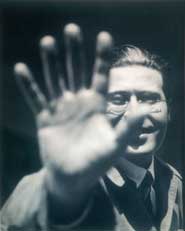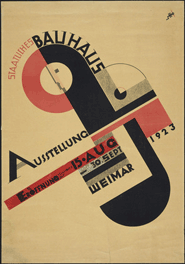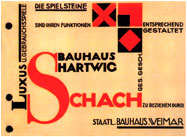| Graphic Design at the Bauhaus (Also see Typography at the Bauhaus) | |||
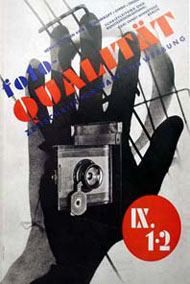 1 |
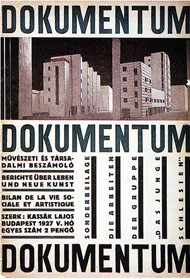 |
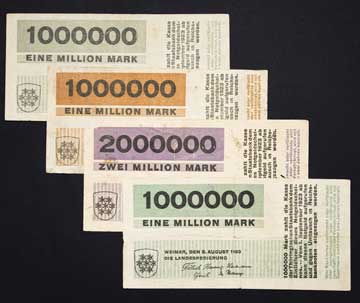 4
4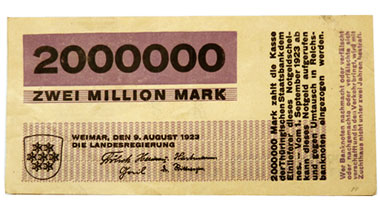 |
|
Moholy-Nagy, Typophoto Excerpt/ The Fiery Stimulator/Fiona McCarthy 2
... He foresaw photography as the artform of the future. As the discovery of one-point perspective gave creative impetus to the Renaissance, so Moholy-Nagy realized that technical advances in photography and film would transform social and cultural values as the 20th century progressed. He predicted: "It is not the person ignorant of writing but the one ignorant of photography who will be the illiterate of the future." Typo was a term he created to describe the combination of text and image.
|
Joost Schmidt (1893–1948) Probably Schmidt's best known piece was his poster advertising a Bauhaus exhibition (below).
Mr. Schmidt seems to have had the ability to do it all, according to Wikipedia "Joost Schmidt taught lettering at the school from 1925–1932; head of the sculpture workshop from 1928-1930. He was also head of the Advertising, Typography, Printing, and associated Photography department from 1928 to 1932. In the years of 1929-1930, he taught life and figure drawing classes for upper division work." He married Helene Nonne who later taught at the Design School in Ulm. Below. Ad for Bauhaus Chess Board
|
||
| Herbert Bayer Austrian Herbert Bayer was trained in the Art Nouveau style but soon was converted by the Bauhaus-Manifest. At age 21 he enrolled in and studied at the Weimar Bauhaus for four years. His main interests were typography and advertising, but with no type shop at the Bauhaus, he studied mural painting under Kandinsky. However he and a few other students began experimenting with typography on their own. After passing his final examination, Bayer was appointed by the Bauhaus director, Walter Gropius, to head the new "Druck und Reklame" (printing and advertising) workshop in Dessau. (Read about his typography work at the Bauhaus here) (Read about his career after the Bauhaus, in the United States, here.)
|
Below an excerpt from Aaron Carámbula, on Speak Up. |
||
| Footnotes | |||
| 1 Iconofgraphics web site, retrieved June 2, 2012 Cover of the revue foto-QUALITAT attributed to László Moholy-Nagy 1931 2 The Fiery Stimulator Fiona MacCarthy The Guardian, Friday 17 March 2006e |
3 Image Source Online Archive of California 4 |
||
| Copyrights | |||
| ©Designhistory.org 2011 | For Permission Info click here | ||

